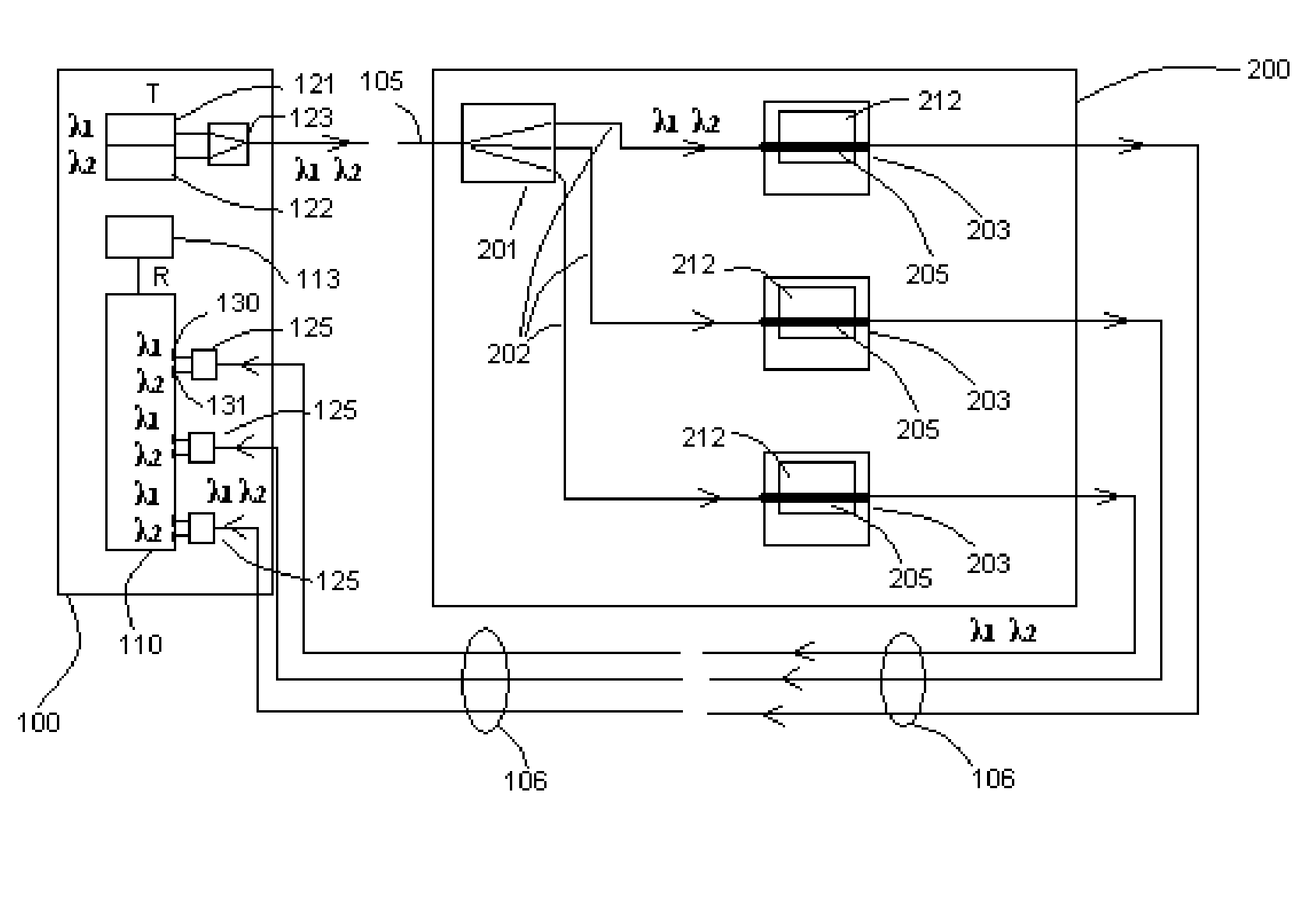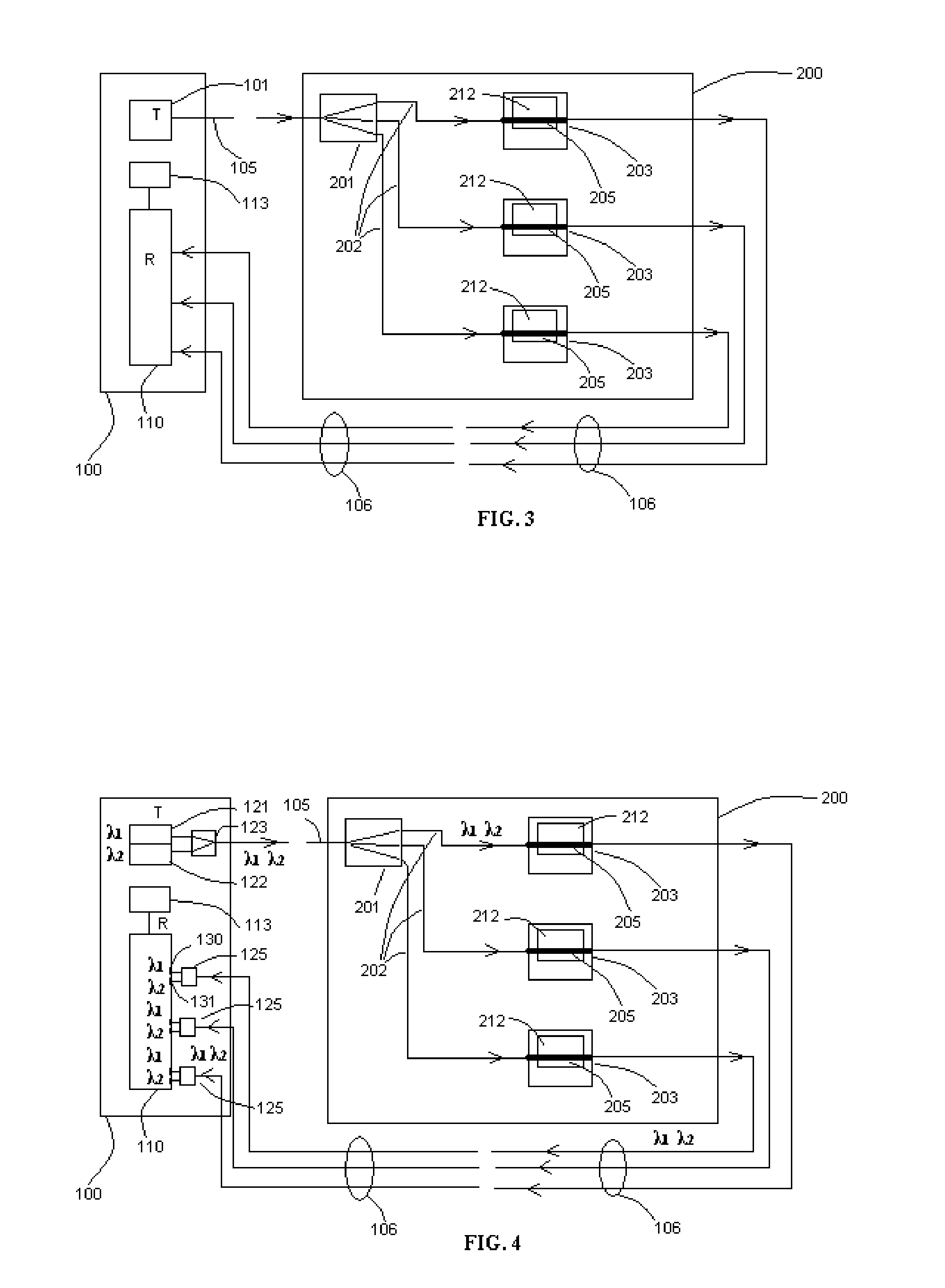Low cost fiber-optic gage and associated multi-channel all-optical data collecting system
a fiber-optic gage and all-optic technology, applied in the field of physical phenomena, can solve the problems of inability to reliably measure the phenomenon, the cost and complexity of the electronic and optical systems required to implement the fiber-optic gage were prohibitively high for most applications, and limited their application in certain fields, so as to improve the reliability and stability of the measurement, and extend the light attenuation range.
- Summary
- Abstract
- Description
- Claims
- Application Information
AI Technical Summary
Benefits of technology
Problems solved by technology
Method used
Image
Examples
Embodiment Construction
[0056] The scheme of the invention—multi-channel all-optical data collecting system gathering information from a number of fiber-optic gages—is depicted in FIG. 3. An electro-optical module 100 comprises a transmitting unit 101, receiving unit 110 and processing unit 113. The transmitting unit 101 of the electro-optical module 100 contains a single-mode fiber-optic source of light, such as a 1310-nm (or 1550 nm) laser diode developed for telecommunication lines. The light source of the unit 101 is optically coupled to an input single-mode fiber-optical line 105, and the light entering the fiber-optical line 105 propagates along that line until it reaches the sensing module 200. In that module, the light passes through a single-mode splitter 201 with number of outputs equal to the number of gages 203. Each output of splitter 201 is optically coupled to delivering single-mode fiber-optical lines 202 transmitting the light to each individual gage. Therefore, the light further propagate...
PUM
 Login to View More
Login to View More Abstract
Description
Claims
Application Information
 Login to View More
Login to View More - R&D
- Intellectual Property
- Life Sciences
- Materials
- Tech Scout
- Unparalleled Data Quality
- Higher Quality Content
- 60% Fewer Hallucinations
Browse by: Latest US Patents, China's latest patents, Technical Efficacy Thesaurus, Application Domain, Technology Topic, Popular Technical Reports.
© 2025 PatSnap. All rights reserved.Legal|Privacy policy|Modern Slavery Act Transparency Statement|Sitemap|About US| Contact US: help@patsnap.com



